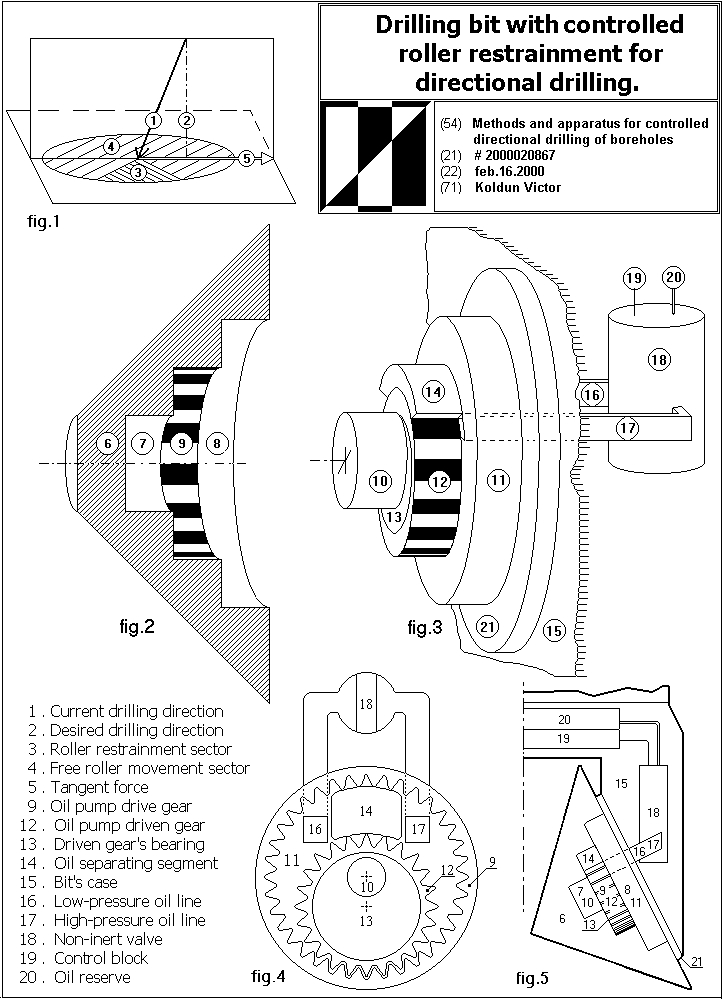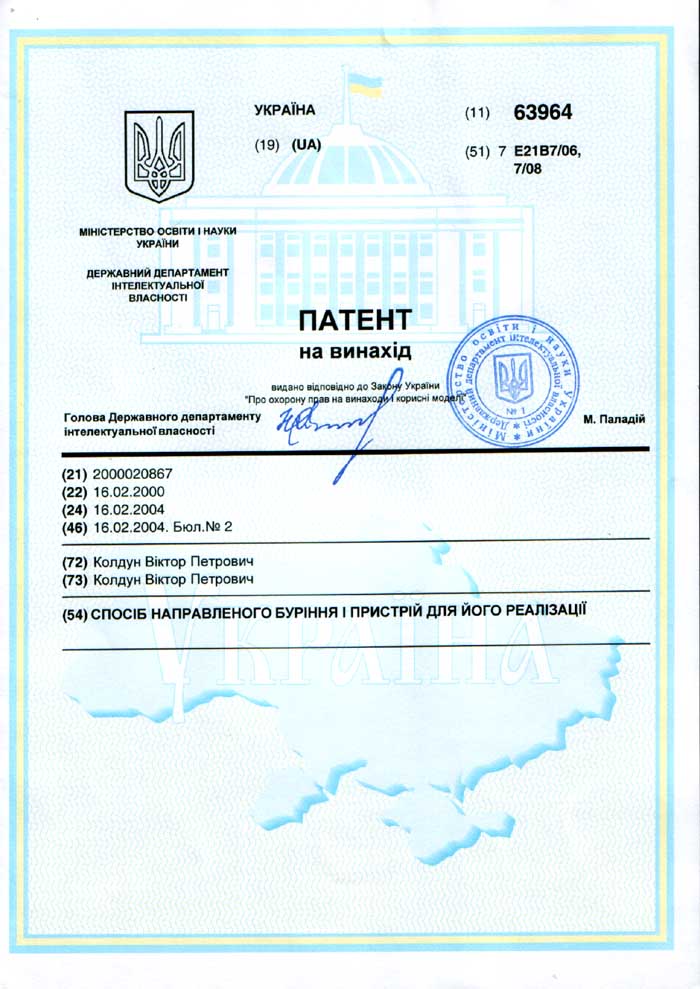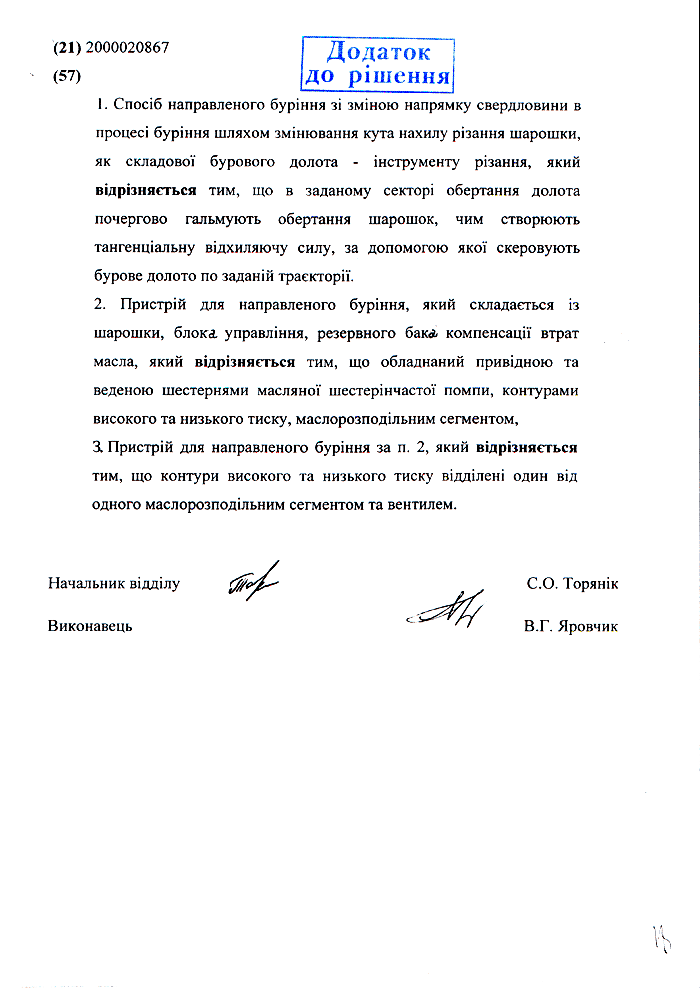|
|
|
Here's to your attention a principally new method of controlled directional drilling, based upon a perfectionalized mathematical model of drilling, which allows to simplify and cheapen the process considerably in any type of mining layer. As well it allows to drill "perfect boreholes" - vertical in rigid layers with transitions to horizontal in oil-layers, or boring with an arbitrary angle or orbitrary trajectory for other needs. Such boreholes will facilitate to increase drastically the area of oil collection and considerably improve the general profitability of drilling works.
Presently directional drilling is realized using complex and expensive transition mechanisms between the drilling column and the drilling bit. Besides, to establish the power supply of such transition mechanisms generally an electric cable is used, which complicates the process of drilling.
I have invented a principally new method of drilling, which is implemented as alternative restrainment of drilling bit's rollers in a certain sector. As the result of a cheap modernization of a drilling bit we can forgo use complex and low-endurance transition mechanisms .
Besides, the control scheme of such a bit is so economical (energy-saving), that we can stop using hard-to-use electric cables, leaving the scheme to draw electric power from a local rechargeable battery during the whole period of operation.

The new method for directional drilling is based on the following : in a certain sector ( 3 ) of the drilling bit's rotary motion rollers ( 6 ) are alternately restrained, which invokes a tangent force , which curves the drilling bit's trajectory as desired .
The restrainment is achieved by a hydrodynamical restrainer ( 9-12-14-16-18-17 ) which is non-inert and extremely durable .
During the motion of the roller through sector ( 4 ) the non-inert valve ( 18 ) is open and the pump ( 9-12-14 ) pumps oil from canal ( 16 ) to canal ( 17 ) freely .
After the roller ( 6 ) has reached sector ( 3 ) the valve ( 18 ) ceases oil flow and pressure in the canal ( 16 ) grows to the point when the roller's ( 6 ) motion is impossible . As the result a tangent force ( 5 ) occurs .
The restrainment mechanism is very well integrated into a classical drilling bit and invokes very few changes in its construction. However , the main point is that the method does not require bulky, complicated and low-fidelity transition mechanisms between the drill and drilling pipes .
Besides the non-inert valve ( 18 ) there is also the more complex construction of the valve developed, which is however much more economical and will consume approx. 1/10 Watts of power from the control block ( 19 ) during all the period of operation, which will allow in the major cases to forgo use cable connection between the bit and the drilling tower , whereas the drilling process can be controlled using internal power battery cells .
If you are interested in the invention and you need more details, I will send them immediately.

